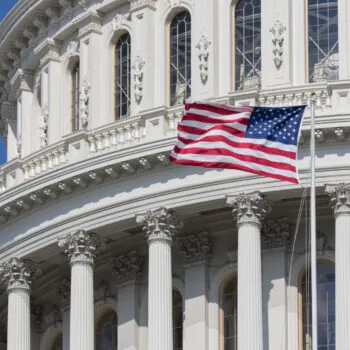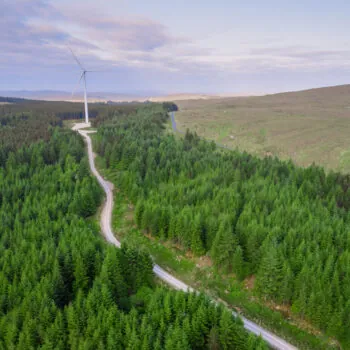Recently, on a snowy Boston morning, State Street Global Advisors hosted a lively discussion on local sustainable finance featuring city leaders, EU officials, investors, academics, and of course, an E3G contingent. The meeting addressed how Boston could incentivize cleaner investment and better understand the risks climate change poses to the city’s financial system, infrastructure, and populace. The 36th floor room had an air of confidence — perhaps we were getting closer to a sustainable economy.
The Boston event was the first in a series of 2019 talks on sustainable finance co-organised by E3G and the EU delegation to the USA. Though the discussion occasionally veered into the technical, attendees could still connect the dots on Boston’s climate goals. Representatives from the local public and private sectors laid out visions and reservations of the city’s sustainable future, while European guests highlighted lessons learned in the wake of the EU Sustainable Finance Action Plan.
Notably, we observed the bulk of Boston’s greenhouse gas (GHG) emissions come from inefficient buildings, heating, and cooling. Ideas were floated for financing retrofits of Boston’s ageing structures. Conversations circled from taxonomies to green bonds to Environmental, Social and Governance reporting (ESG). How much of this however, was actually cutting through to the asset managers and investors who control the world’s financial flows?
Luckily, straight after the Boston event on my annual ski trip with college friends, I got to take a deeper dive into the finance world. Hailing from Wall Street hedge funds, my ski buddies were eager to catch up on all things climate-related. On the chairlift, we spoke about the Paris agreement, the prospects for a Green New Deal, carbon pricing, and Elon Musk’s latest escapades. Each friend was more well-versed than the next on climate change issues (perhaps uncommonly so, for the US). Furthermore, they were genuinely concerned by the nature and scale of the problem and the relative shortcomings of solutions. It was heartening to note professionals from the US finance sector were finally taking an interest in climate change.
Sensing my chance, I negotiated the conversation toward the Boston meeting. The parallel between sustainable finance and my friends’ everyday roles on Wall Street, evaluating companies and stock prices, seemed natural. According to Bank Track’s 2019 Fossil Fuel Report Card, since the adoption of the Paris Agreement in 2015, 33 global banks have provided $1.9 trillion to fossil fuel companies. The amount of this financing has risen in each of the past two years. Firms, such as JP Morgan Chase and Wells Fargo can actually shift billions of dollars from high-carbon assets to cleaner industries and technologies. So, this was my chance, it’s where the proverbial rubber meets the road, right? Wrong.
Blank stares, shaking heads, and a knowing chuckle. “We never actually look at any of that ESG stuff. It’s not our job.” Though they were aware “some of the European companies seem really into carbon footprints and disclosure,” here in the US it appears ESG hasn’t quite matured to influencing decisions on stock holdings. Not yet on Wall Street anyway.
These guys (and yes finance is still dominated by guys) could rattle off several major tech companies’ choices to procure renewable energy. They even noted BlackRock CEO Larry Fink’s evolving position on sustainable finance. But they readily admitted, that wasn’t part of their calculus when weighing a company’s bottom line and earnings potential. When pressed on recent sustainability initiatives at major investment banks, they pointed out those usually constitute separate funds and side-projects. They aren’t representative of the banks’ full portfolios.
These were the opinions of just a few people, and we’re making more progress than they realize. Europe is moving quickly to harmonize and implement green taxonomies and benchmarks, as work by the Task Force on Climate-related Financial Disclosure, the High-Level Expert Group on Sustainable Finance and the Technical Expert Group on Sustainable Finance shows. Perhaps it’s only a matter of time before Washington and Wall Street follow suit.
For now, I resolved to understand why my friends weren’t taking this information into consideration, professionally. According to them, the answer was straightforward: Climate impacts and financial risks are being felt by companies already, but the time horizon for them to incrementally worsen is on the order of years to decades. Hedge funds, on the other hand, make high-risk, short-term bets on investment cycles measured in months. For these particular investors, there’s simply too much money to be made right now.
Incentivising larger funds and institutional investors to take a long-term view on investments is precisely one of the areas the EU’s Sustainable Finance Action Plan attempts to address. As discussed in Boston it also encourages shareholders to re-orient companies that don’t consider the long-term. These behaviour changes must take place in the financial world if we are to deliver the promise of the Paris agreement.
As I slumped back in the chairlift, I realized we’d been discussing climate change, energy mixes, technology innovation, and sustainable finance all afternoon. The interest was unmistakable – these guys were intellectually and personally invested in the matter. Now we need to make the money follow.


